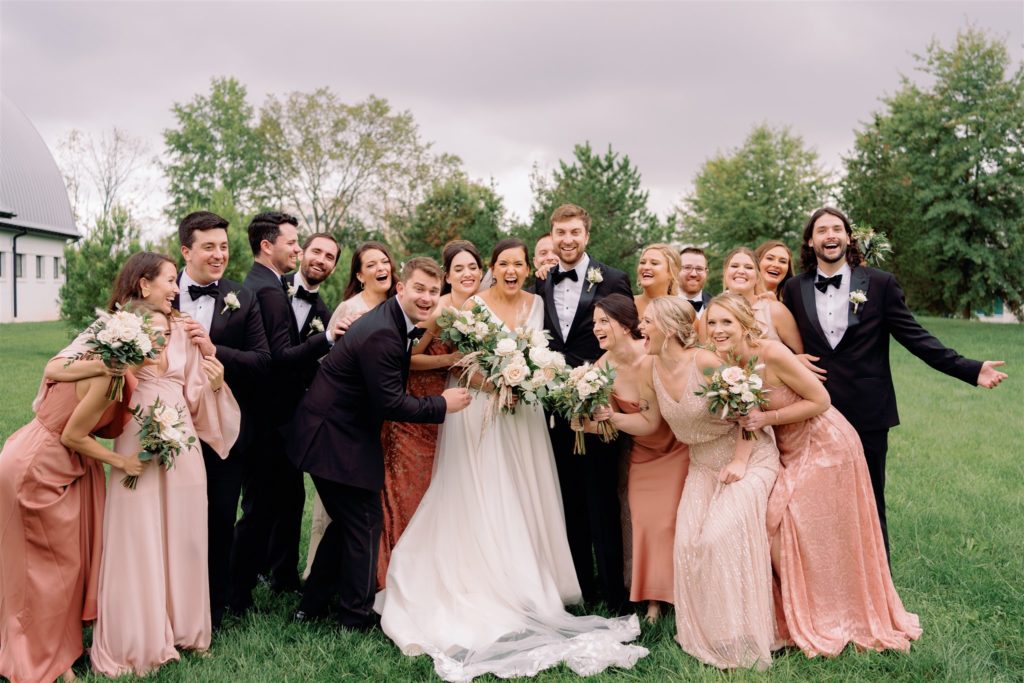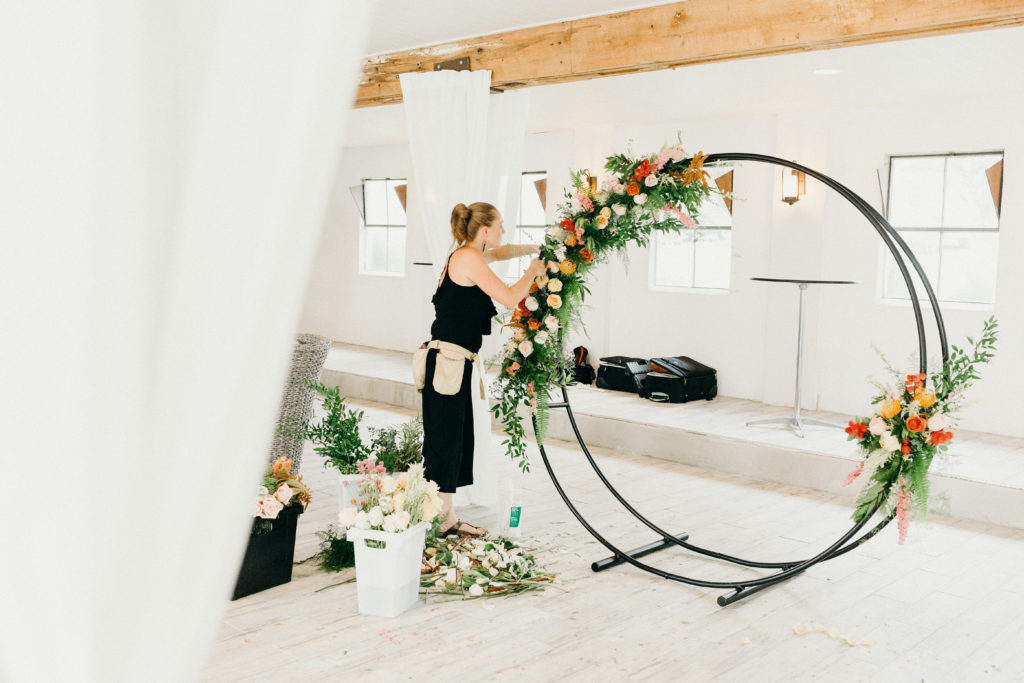How to Create a Wedding Budget by Focusing on Your Top 3
filed under

If you’re recently engaged or at the beginning of your wedding planning experience, you may feel overwhelmed by all the information telling you how much a wedding should cost and what you should spend on different vendor categories. You may encounter conflicting information, and what may have started as an exciting time celebrating your engagement may quickly become a very stressful process of figuring out a wedding budget and how much you’ll need to pay to achieve your dream wedding.
Before you go any further down the Google rabbit hole, let’s pause! Take a deep breath and know there can be a better way. In this blog post we’ll outline a few steps you can take to tune out the noise and really create a wedding budget that reflects your personal priorities.
Tune Out the Noise
The first thing we’d like you to do is think back to what this day is all about. Your wedding is the amazing kick off to celebrate your marriage. And who is it that will be in this marriage?! This isn’t a trick question, but it is meant to remind you that while your parents, siblings and best friends may cheer you on in support of your marriage, they are not, in fact, in your marriage. And since your wedding day is all about your marriage, your wedding day is not about them either.
Now you might be saying to yourself, my family’s approval is important to me or I’d like to honor my loved ones on my special day. These are wonderful things and we love a wedding day that prioritizes the guest experience, but when it comes to final decisions about what that day will look and feel like, it’s important to make sure the two of you as a couple are on the same page about those decisions first. Because when you get engaged, everyone has an opinion! And we know what it can feel like to be on the receiving end of what everyone else thinks your wedding should look like.

Our wish for couples is that you would be able to sift through all the noise, take the suggestions that are helpful and feel true to you, and let go of the rest. You can respectfully listen to someone’s suggestion without needing to act on it. And if you’re feeling pressured by outside opinions, it’s a perfect time for you, together as a couple, to gently remind that outside voice that this day needs to be a reflection of your love and relationship. Make an agreement with each other as a couple that you’ll support one another in protecting your wedding day vision to ensure the end result is something that feels like you.
Determine Your Top Priorities
Once you’ve agreed to protect your wedding vision, it’s time to determine your top priorities. What parts of your wedding day are you most looking forward to? What excites you most when you think about your wedding? Take a moment to individually write down your top priorities. List everything that comes to mind and then rank them in order of importance.
Once you’ve each created and ranked your lists, review them together and see where there are commonalities and where there are differences. Create a new, joint list of priorities and rank them together. The top three wedding categories are what we want you to focus on first when thinking about your wedding budget!

Wedding Budget 101: Do Your Research
With your top three priorities in hand, start reaching out to vendors for those categories to get a sense of pricing. Schedule consultation calls with a few vendors in each category so you can evaluate your options. Or if there’s a particular vendor who you’ve had your eye on for months and you just know they’re the one, like a photographer you want capturing your day, definitely reach out to that vendor first! Have calls, get to know the vendors, and request quotes or proposals so you can see what your top wedding categories will actually cost in your local wedding market.
Do not rely solely on Google for this step! You want actual numbers in black in white for the wedding you’re trying to have, not what the internet says you should expect to spend or nationwide averages. You’ll only set yourself up for failure and disappointment if you do that.
Once you have proposals in hand for your top vendors, take a look back at your overall wedding budget and allocate enough money in your budget to cover expenses associated with the categories you value most. This will ensure your spending is in alignment with what you find to be most meaningful. Once you’ve set aside money for your top three wedding categories, then review how much you have left to spend on all the other categories. You may find you may need to make some adjustments, either putting more towards your overall budget, or cutting back in other areas than you first anticipated.

Pro-tip: The quickest way to cut wedding costs is to cut back on your guest list. Before you feel like you need to compromise on the overall experience you’re creating for your day, take a look at your guest list to see if all the people on it are ones you couldn’t imagine have your wedding day without.
Is the work of creating a wedding budget more than you’d like to handle? Reach out here to learn how we can help!